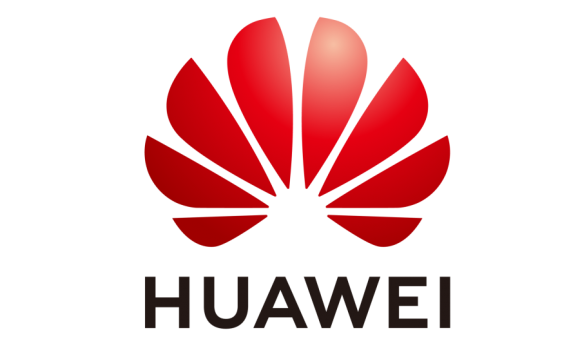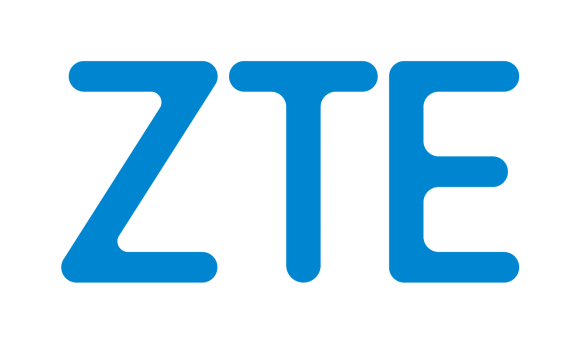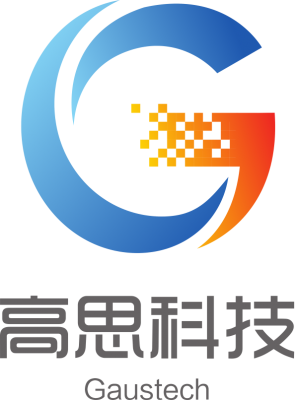All tutorials listed below are offline and accessible on-demand.
- T01. Cognitive Network Management for QoS Provisioning in Wireless Networks
- T02. Enabling Joint Communication and Radio Sensing in Mobile Networks: A Tutorial
- T03. MetaEverything: Intelligent Meta-Surface Aided Sensing and Communications
- T04. Machine Learning for Intelligent Wireless Communications
- T05. Programmability for Context-Aware Smart IoT Applications
- T06. Active Learning in Wireless Communication Systems: Agent Design and Methodology
T07. Digital Twin for 6G (Cancelled)- T08. Rate Splitting Multiple Access for Beyond 5G: Principles, Recent Advances, and Future Research Trends
- T09. Reconfigurable Intelligent Surfaces for Future Wireless Communications
- T10. Wireless Communications for Federated Learning
Details
T01. Cognitive Network Management for QoS Provisioning in Wireless Networks
- Song Ci, Tsinghua University, China
- Haris Gacanin, Nokia Bell Labs, Germany
Abstract: With the fast development of radio and networking technologies, modern communication systems have become more and more complex. On the other hand, the overall communication infrastructure needs to satisfy various QoS (Quality of Service) requirements posed by various users and application scenarios. The shift from managing network nodes and devices to managing functions that are part of services provided to users will be addressed. These functions are mostly related to the end-to-end user experience and directly coupled with different network management strategies. This tutorial gives an overview of multi-disciplinary research related to user experience and network management with their components and design challenges. We address the shortcomings of contemporary rule-based optimization protocols and re-thinking our operations and management for boosting the network performance. Specifically, a paradigm shift toward the confluence of computer science and communication engineering would be necessary to embrace and study interactions between network design and user experience. To design user-centric communication network, the following major design challenges have to be overcome: 1) provide end-to-end application-oriented QoS for connecting users, 2) design end-to-end communication connectivity infrastructure to autonomous adapt to dynamic changes of QoS requirements and 3) respond various operational dynamics existing in both physical and user domains in an agile fashion. The overarching goal of this tutorial is to elaborate on the feasibility of applications of artificial intelligence in communication network management for application-oriented end-to-end QoS provisioning.
Presenters:
 Song Ci received his B.S. from Shandong University, M.S. from Chinese Academy of Sciences, and Ph.D. from University of Nebraska-Lincoln, in 1992, 1998, and 2002, respectively, all in Electrical Engineering. He is a Professor with Electrical Engineering Department, Tsinghua University, China. Before joining Tsinghua University, he was a Tenured Associate Professor with the ECE Department, University of Nebraska–Lincoln, USA. He was an assistant engineer in Shandong P&T Engineering Co. Ltd. from 1992 to 1995 and a R&D engineer in 3COM Corporation in 2001. He is the founder of Nova Greentech, Inc., an Energy Internet company. His current research interests include large-scale dynamic complex system modeling and optimization, and its applications in the Internet and the Energy Internet. He has authored more than 300 peer-reviewed articles in those areas. He is a senior member of IEEE and a member of ACM. He has served as an Editor or a Guest Editor in many journals and served on TPCs of numerous international conferences.
Song Ci received his B.S. from Shandong University, M.S. from Chinese Academy of Sciences, and Ph.D. from University of Nebraska-Lincoln, in 1992, 1998, and 2002, respectively, all in Electrical Engineering. He is a Professor with Electrical Engineering Department, Tsinghua University, China. Before joining Tsinghua University, he was a Tenured Associate Professor with the ECE Department, University of Nebraska–Lincoln, USA. He was an assistant engineer in Shandong P&T Engineering Co. Ltd. from 1992 to 1995 and a R&D engineer in 3COM Corporation in 2001. He is the founder of Nova Greentech, Inc., an Energy Internet company. His current research interests include large-scale dynamic complex system modeling and optimization, and its applications in the Internet and the Energy Internet. He has authored more than 300 peer-reviewed articles in those areas. He is a senior member of IEEE and a member of ACM. He has served as an Editor or a Guest Editor in many journals and served on TPCs of numerous international conferences.
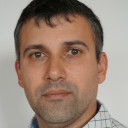 Haris Gačanin received his Dipl.-Ing. degree in Electrical engineering from the University of Sarajevo in 2000. In 2005 and 2008, respectively, he received MSc and Ph.D. from Tohoku University in Japan. He was with Tohoku University from 2008 until 2010 first as a Japan Society for the Promotion of Science (JSPS) postdoctoral fellow and later, as an Assistant Professor. He joined Alcatel-Lucent Bell (now Nokia Bell) in 2010 as a Physical-layer Expert and later as Department Head at Nokia Bell Labs. From 2020, he is a full professor at RWTH Aachen University where he is head of Chair for Distributed Signal Processing and a co-director of the Institute for Communication Technologies and Embedded Systems at RWTH Aachen University. His professional interests are related to broad areas of digital signal processing and artificial intelligence with applications in wireless communications. He has 200+ scientific publications (journals, conferences, and patent applications) and invited/tutorial talks. He is a Distinguished Lecturer of IEEE Vehicular Technology Society and an Associate Editor of IEEE Communications Magazine, while he served as the editor of IEICE Transactions on Communications and IET Communications. He is a Fellow of the Institute of Electrical and Electronics Engineers (IEEE) and acted as a general chair and technical program committee member of various IEEE conferences. He is a recipient of several Nokia innovation awards, IEICE Communication System Study Group Best Paper Award (joint 2014, 2015, 2017), The 2013 Alcatel-Lucent Award of Excellence, the 2012 KDDI Foundation Research Award, the 2009 KDDI Foundation Research Grant Award, the 2008 JSPS Postdoctoral Fellowships for Foreign Researchers, the 2005 Active Research Award in Radio Communications, 2005 Vehicular Technology Conference (VTC 2005-Fall) Student Paper Award from IEEE VTS Japan Chapter and the 2004 Institute of IEICE Society Young Researcher Award.
Haris Gačanin received his Dipl.-Ing. degree in Electrical engineering from the University of Sarajevo in 2000. In 2005 and 2008, respectively, he received MSc and Ph.D. from Tohoku University in Japan. He was with Tohoku University from 2008 until 2010 first as a Japan Society for the Promotion of Science (JSPS) postdoctoral fellow and later, as an Assistant Professor. He joined Alcatel-Lucent Bell (now Nokia Bell) in 2010 as a Physical-layer Expert and later as Department Head at Nokia Bell Labs. From 2020, he is a full professor at RWTH Aachen University where he is head of Chair for Distributed Signal Processing and a co-director of the Institute for Communication Technologies and Embedded Systems at RWTH Aachen University. His professional interests are related to broad areas of digital signal processing and artificial intelligence with applications in wireless communications. He has 200+ scientific publications (journals, conferences, and patent applications) and invited/tutorial talks. He is a Distinguished Lecturer of IEEE Vehicular Technology Society and an Associate Editor of IEEE Communications Magazine, while he served as the editor of IEICE Transactions on Communications and IET Communications. He is a Fellow of the Institute of Electrical and Electronics Engineers (IEEE) and acted as a general chair and technical program committee member of various IEEE conferences. He is a recipient of several Nokia innovation awards, IEICE Communication System Study Group Best Paper Award (joint 2014, 2015, 2017), The 2013 Alcatel-Lucent Award of Excellence, the 2012 KDDI Foundation Research Award, the 2009 KDDI Foundation Research Grant Award, the 2008 JSPS Postdoctoral Fellowships for Foreign Researchers, the 2005 Active Research Award in Radio Communications, 2005 Vehicular Technology Conference (VTC 2005-Fall) Student Paper Award from IEEE VTS Japan Chapter and the 2004 Institute of IEICE Society Young Researcher Award.
T02. Enabling Joint Communication and Radio Sensing in Mobile Networks: A Tutorial
- J. Andrew Zhang, University of Technology Sydney, Australia
- Kai Wu, University of Technology Sydney, Australia
- Y. Jay Guo, University of Technology Sydney, Australia
Abstract: Joint communication and radar/radio sensing (JCAS) is emerging as a main technology for future communications and sensing networks and services. To take full advantage of the ubiquitous mobile networks, one can integrate sensing functionalities into future mobile networks to create a perceptive mobile network (PMN). It is envisaged that PMNs have the potential to revolutionize future 5G and beyond networks by offering ubiquitous sensing for numerous smart applications. In the proposed tutorial, we aim to provide a timely introduction of PMN, depicting an all-embracing picture of the motivation, methodology, challenges and research opportunities. To accomplish our ambitious goal, the tutorial will be clearly structured to answer three essential and intriguing questions: why, what and how? Numerous exemplary PMN designs and system diagrams covering a wide range of applications will be presented to accommodate a broad audience.
Presenters:
 J. Andrew Zhang (IEEE M’04-SM’11) is an associate professor at the School of Computing and Communications, University of Technology Sydney (UTS), Sydney, Australia. He received the B.Sc. degree from Xi’an JiaoTong University, China, in 1996, the M.Sc. degree from Nanjing University of Posts and Telecommunications, China, in 1999, and the Ph.D. degree from the Australian National University, Canberra, Australia, in 2004. Prof. Zhang is passionate about research innovation, and is an internationally recognized researcher in wireless communications and sensing. He is pioneer in perceptive mobile networks. Prof. Zhang has published more than 180 papers in leading international journals and conference proceedings and hold 5 patents. He has won 5 best paper awards for his work, including the best paper award in ICC 2013, the prestigious IEEE Tutorial Proposal for IEEE WCNC 2021 4 Communication Society flagship conference. He is a recipient of CSIRO top award, CSIRO Chairman’s Medal, as a seminal contributor and the Australian Engineering Innovation Award in 2012 for exceptional research achievements in multi-gigabit wireless communications. He is serving as an Editor for IEEE Transactions on Communications.
J. Andrew Zhang (IEEE M’04-SM’11) is an associate professor at the School of Computing and Communications, University of Technology Sydney (UTS), Sydney, Australia. He received the B.Sc. degree from Xi’an JiaoTong University, China, in 1996, the M.Sc. degree from Nanjing University of Posts and Telecommunications, China, in 1999, and the Ph.D. degree from the Australian National University, Canberra, Australia, in 2004. Prof. Zhang is passionate about research innovation, and is an internationally recognized researcher in wireless communications and sensing. He is pioneer in perceptive mobile networks. Prof. Zhang has published more than 180 papers in leading international journals and conference proceedings and hold 5 patents. He has won 5 best paper awards for his work, including the best paper award in ICC 2013, the prestigious IEEE Tutorial Proposal for IEEE WCNC 2021 4 Communication Society flagship conference. He is a recipient of CSIRO top award, CSIRO Chairman’s Medal, as a seminal contributor and the Australian Engineering Innovation Award in 2012 for exceptional research achievements in multi-gigabit wireless communications. He is serving as an Editor for IEEE Transactions on Communications.
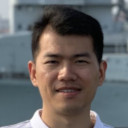 Kai Wu is a research associate at the University of Technology Sydney (UTS), Sydney, Australia. He received the B.E. in Information Countermeasure Technology and PhD in Signal and Information Processing, both from Xidian University, Xi’an, China, in 2012 and 2019, respectively. He also received a PhD in Computer Science, from UTS in 2020. From Nov. 2017 to April 2018, he was a research assistant at UTS. Before that, he was a visiting researcher at DATA61, CSIRO, Australia (Nov. 2016 - Nov. 2017). He currently focuses on JCAS research. Kai received the Excellent Ph.D. Thesis Award from Chinese Institute of Electronics in 2019 which is one of the most significant awards for PhDs in China with only 20 recipients among all PhDs received in consecutive three years, i.e., 2017~2019.
Kai Wu is a research associate at the University of Technology Sydney (UTS), Sydney, Australia. He received the B.E. in Information Countermeasure Technology and PhD in Signal and Information Processing, both from Xidian University, Xi’an, China, in 2012 and 2019, respectively. He also received a PhD in Computer Science, from UTS in 2020. From Nov. 2017 to April 2018, he was a research assistant at UTS. Before that, he was a visiting researcher at DATA61, CSIRO, Australia (Nov. 2016 - Nov. 2017). He currently focuses on JCAS research. Kai received the Excellent Ph.D. Thesis Award from Chinese Institute of Electronics in 2019 which is one of the most significant awards for PhDs in China with only 20 recipients among all PhDs received in consecutive three years, i.e., 2017~2019.
 Y. Jay Guo is the founding Director of Global Big Data Technologies Centre and Distinguished Professor at University of Technology (UTS), Sydney. He is an internationally established scientist with over 500 publications and patents, and an author of five books. He has over thirty years of experience in mobile industry, CSIRO and academia. His research interest includes antennas, wireless communications and sensing systems and networks. He is an innovator with strong and sustained industrial impact, and a globally recognized R&D leader with proven track record. Prof Guo is a Fellow of the Australian Academy of Engineering (ATSE), a Fellow of IEEE, and a Fellow of the Institute of Engineering and Technology (IET). He is the recipient of Australia Government Engineering Innovation Award (2012), Australia Engineering Excellence Award (2007) and CSIRO Chairman’s Medal (2007 & 2012). He was named to one of the most influential engineers in Australia in 2014 and 2015. He joined the College of Experts of the Australian Research Council in 2015.
Y. Jay Guo is the founding Director of Global Big Data Technologies Centre and Distinguished Professor at University of Technology (UTS), Sydney. He is an internationally established scientist with over 500 publications and patents, and an author of five books. He has over thirty years of experience in mobile industry, CSIRO and academia. His research interest includes antennas, wireless communications and sensing systems and networks. He is an innovator with strong and sustained industrial impact, and a globally recognized R&D leader with proven track record. Prof Guo is a Fellow of the Australian Academy of Engineering (ATSE), a Fellow of IEEE, and a Fellow of the Institute of Engineering and Technology (IET). He is the recipient of Australia Government Engineering Innovation Award (2012), Australia Engineering Excellence Award (2007) and CSIRO Chairman’s Medal (2007 & 2012). He was named to one of the most influential engineers in Australia in 2014 and 2015. He joined the College of Experts of the Australian Research Council in 2015.
T03. MetaEverything: Intelligent Meta-Surface Aided Sensing and Communications
- Boya Di, Imperial College London, London, UK
- Hongliang Zhang, Princeton University, Princeton, USA
- Zhu Han, University of Houston, Houston, USA
- Lingyang Song, Peking University, Beijing, China
Abstract: There are three main objectives of writing this tutorial. The first objective is to provide a general introduction of the intelligent meta-surface along with the state-of-the-art research in different areas. The second objective is to introduce the unique features of intelligent meta-surface which enlighten its broad applications to communication and sensing, in a comprehensive way. Related design, analysis, optimization, and signal processing techniques will be presented. The third objective is to explore typical meta-surface applications and discuss implementation issues with an emphasis on high-resolution wireless sensors, smart RF sensing, and communications. Formalized analysis of several up-to-date challenges and technical details on system design will be provided for different applications.
Presenters:
 Boya Di received the B.S. degree from Peking University in 2014, and the Ph.D. degree from Peking University in 2019. Currently she is post-doctoral research associate in Imperial College London, London, UK. Her main research interests include aerial access networks, vehicular networks, wireless resource allocation and management, edge computing, non-orthogonal multiple access, and optimization theory. She has contributed as the first author for 12 journal articles. Moreover, one of her journal papers is currently listed as highly cited papers in Web of Science. She received the best doctoral thesis award from Chinese Education Society of Electronics in 2019. She is currently an Editor for IEEE Transactions on Vehicular Technology. She has also served as a reviewer for multiple IEEE journals including IEEE JSAC, TWC, TVT, TCOM, etc., and a TPC member for IEEE GLOBECOM and ICC several times.
Boya Di received the B.S. degree from Peking University in 2014, and the Ph.D. degree from Peking University in 2019. Currently she is post-doctoral research associate in Imperial College London, London, UK. Her main research interests include aerial access networks, vehicular networks, wireless resource allocation and management, edge computing, non-orthogonal multiple access, and optimization theory. She has contributed as the first author for 12 journal articles. Moreover, one of her journal papers is currently listed as highly cited papers in Web of Science. She received the best doctoral thesis award from Chinese Education Society of Electronics in 2019. She is currently an Editor for IEEE Transactions on Vehicular Technology. She has also served as a reviewer for multiple IEEE journals including IEEE JSAC, TWC, TVT, TCOM, etc., and a TPC member for IEEE GLOBECOM and ICC several times.
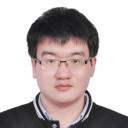 Hongliang Zhang received the B.S. and Ph.D. degrees at the School of Electrical Engineering and Computer Science at Peking University, in 2014 and 2019, respectively. He was a Postdoctoral Fellow in the Electrical and Computer Engineering Department at the University of Houston, Texas from Jul. 2019 to Jul. 2020. Currently, he is a Postdoctoral Associate in the Department of Electrical Engineering at Princeton University, New Jersey. His current research interest includes cooperative communications, Internet-of-Things networks, hypergraph theory, and optimization theory. He received the best doctoral thesis award from Chinese Institute of Electronics in 2019. He has served as a TPC Member for many IEEE conferences, such as Globecom, ICC, and WCNC. He is currently an Editor for IET Communications. He also serves as a Guest Editor for IEEE IoT-J special issue on Internet of UAVs over Cellular Networks.
Hongliang Zhang received the B.S. and Ph.D. degrees at the School of Electrical Engineering and Computer Science at Peking University, in 2014 and 2019, respectively. He was a Postdoctoral Fellow in the Electrical and Computer Engineering Department at the University of Houston, Texas from Jul. 2019 to Jul. 2020. Currently, he is a Postdoctoral Associate in the Department of Electrical Engineering at Princeton University, New Jersey. His current research interest includes cooperative communications, Internet-of-Things networks, hypergraph theory, and optimization theory. He received the best doctoral thesis award from Chinese Institute of Electronics in 2019. He has served as a TPC Member for many IEEE conferences, such as Globecom, ICC, and WCNC. He is currently an Editor for IET Communications. He also serves as a Guest Editor for IEEE IoT-J special issue on Internet of UAVs over Cellular Networks.
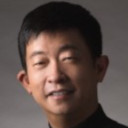 Zhu Han received the B.S. degree in electronic engineering from Tsinghua University, in 1997, and the M.S. and Ph.D. degrees in electrical engineering from the University of Maryland, College Park, in 1999 and 2003, respectively. From 2000 to 2002, he was an R&D Engineer of JDSU, Germantown, Maryland. From 2003 to 2006, he was a Research Associate at the University of Maryland. From 2006 to 2008, he was an assistant professor in Boise State University, Idaho. Currently, he is a Professor in Electrical and Computer Engineering Department as well as Computer Science Department at the University of Houston, Texas. His research interests include wireless resource allocation and management, wireless communications and networking, game theory, wireless multimedia, security, and smart grid communication. Dr. Han received an NSF Career Award in 2010, the Fred W. Ellersick Prize of the IEEE Communication Society in 2011, the EURASIP Best Paper Award for the Journal on Advances in Signal Processing in 2015, the IEEE Kiyo Tomiyasu Award in 2021, and several best paper awards in IEEE conferences. Dr. Han is top 1% highly cited researcher according to Web of Science since 2017, and AAAS fellow since 2019.
Zhu Han received the B.S. degree in electronic engineering from Tsinghua University, in 1997, and the M.S. and Ph.D. degrees in electrical engineering from the University of Maryland, College Park, in 1999 and 2003, respectively. From 2000 to 2002, he was an R&D Engineer of JDSU, Germantown, Maryland. From 2003 to 2006, he was a Research Associate at the University of Maryland. From 2006 to 2008, he was an assistant professor in Boise State University, Idaho. Currently, he is a Professor in Electrical and Computer Engineering Department as well as Computer Science Department at the University of Houston, Texas. His research interests include wireless resource allocation and management, wireless communications and networking, game theory, wireless multimedia, security, and smart grid communication. Dr. Han received an NSF Career Award in 2010, the Fred W. Ellersick Prize of the IEEE Communication Society in 2011, the EURASIP Best Paper Award for the Journal on Advances in Signal Processing in 2015, the IEEE Kiyo Tomiyasu Award in 2021, and several best paper awards in IEEE conferences. Dr. Han is top 1% highly cited researcher according to Web of Science since 2017, and AAAS fellow since 2019.
 Lingyang Song received his PhD from the University of York, UK, in 2007, where he received the K. M. Stott Prize for excellent research. He worked as a research fellow at the University of Oslo, Norway until rejoining Philips Research UK in March 2008. In May 2009, he joined the School of Electronics Engineering and Computer Science, Peking University, and is now a Boya Distinguished Professor. His main research interests include wireless communications, mobile computing, and machine learning. Dr. Song is the co-author of many awards, including IEEE Leonard G. Abraham Prize in 2016, IEEE ICC 2014, IEEE ICC 2015, IEEE Globecom 2014, and the best demo award in the ACM Mobihoc 2015. He received National Science Fund for Distinguished Young Scholars in 2017, First Prize in Nature Science Award of Ministry of Education of China in 2017. Dr. Song has served as a IEEE ComSoc Distinguished Lecturer (2015-2018), an Area Editor of IEEE Transactions on Vehicular Technology (2019-), Co-chair of IEEE Communications Society Asia Pacific Board Technical Affairs Committee (2020-). He is a Clarivate Analytics Highly Cited Researcher.
Lingyang Song received his PhD from the University of York, UK, in 2007, where he received the K. M. Stott Prize for excellent research. He worked as a research fellow at the University of Oslo, Norway until rejoining Philips Research UK in March 2008. In May 2009, he joined the School of Electronics Engineering and Computer Science, Peking University, and is now a Boya Distinguished Professor. His main research interests include wireless communications, mobile computing, and machine learning. Dr. Song is the co-author of many awards, including IEEE Leonard G. Abraham Prize in 2016, IEEE ICC 2014, IEEE ICC 2015, IEEE Globecom 2014, and the best demo award in the ACM Mobihoc 2015. He received National Science Fund for Distinguished Young Scholars in 2017, First Prize in Nature Science Award of Ministry of Education of China in 2017. Dr. Song has served as a IEEE ComSoc Distinguished Lecturer (2015-2018), an Area Editor of IEEE Transactions on Vehicular Technology (2019-), Co-chair of IEEE Communications Society Asia Pacific Board Technical Affairs Committee (2020-). He is a Clarivate Analytics Highly Cited Researcher.
T04. Machine Learning for Intelligent Wireless Communications
- Tomoaki Ohtsuki, Keio University, Yokohama, Japan
- Miao Liu, Nanjing University of Posts and Telecommunications, Nanjing, China
Abstract: With the rapid development in artificial intelligence (AI) and machine learning (ML), it can be foreseen that the future wireless communication systems will have much more intelligence than the predecessors. For problems that can be accurately modeled, traditional algorithms show good performance and efficient solutions on partially convex problems. However, for some non-convex problems, existing algorithms usually obtain more efficient solutions while allowing a certain performance loss. At this time, the ML technology is used to mine the parameter information of the known structure algorithm from the obtained data samples, to improve the convergence speed of the algorithm and the performance of the algorithm. Usually this ML-based parameter learning algorithm is called deep expansion or model-driven algorithm. However, a large number of 5G scenarios cannot be modeled by exact mathematical models such as some efficiency and latency optimization problems, resulting in the inability to obtain the accurate algorithm structure. In this case, the artificial neural networks (ANNs) including deep neural network (DNN), convolutional neural network (CNN) and so on are used to parameterize the model or algorithm, and the gradient based methods are used to optimize the NNs. These methods that obtain model or algorithm features from massive amounts of data rather than based on pre-established rules are generally called data-driven. Here we focus on the research and application of ML in physical layer. On the one hand, model based algorithms for signal detection or channel estimation can be enhanced by ML to improve the computing efficiency and system performance. On the other hand, traditional model-based methods are increasingly unable to meet the increasing demands of next-generation communication systems under the channel conditions with more complex interference and higher uncertainty. ML has the potential opportunities to redesign the baseband module including coding/decoding, detection and so on.
Presenters:
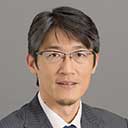 Tomoaki Ohtsuki received the B.E., M.E., and Ph. D. degrees in Electrical Engineering from Keio University, Yokohama, Japan in 1990, 1992, and 1994, respectively. From 1994 to 1995 he was a Post-Doctoral Fellow and a Visiting Researcher in Electrical Engineering at Keio University. From 1993 to 1995 he was a Special Researcher of Fellowships of the Japan Society for the Promotion of Science for Japanese Junior Scientists. From 1995 to 2005 he was with Science University of Tokyo. In 2005 he joined Keio University. He is now a Professor at Keio University. From 1998 to 1999 he was with the department of electrical engineering and computer sciences, University of California, Berkeley. He is engaged in research on wireless communications, optical communications, signal processing, and information theory. Dr. Ohtsuki is a recipient of the 1997 Inoue Research Award for Young Scientist, the 1997 Hiroshi Ando Memorial Young Engineering Award, Ericsson Young Scientist Award 2000, 2002 Funai Information and Science Award for Young Scientist, IEEE the 1st Asia-Pacific Young Researcher Award 2001, the 5th International Communication Foundation (ICF) Research Award, 2011 IEEE SPCE Outstanding Service Award, the 27th TELECOM System Technology Award, ETRI Journal’s 2012 Best Reviewer Award, and 9th International Conference on Communications and Networking in China 2014 (CHINACOM’14) Best Paper Award. He has published more than 195 journal papers and 400 international conference papers.
Tomoaki Ohtsuki received the B.E., M.E., and Ph. D. degrees in Electrical Engineering from Keio University, Yokohama, Japan in 1990, 1992, and 1994, respectively. From 1994 to 1995 he was a Post-Doctoral Fellow and a Visiting Researcher in Electrical Engineering at Keio University. From 1993 to 1995 he was a Special Researcher of Fellowships of the Japan Society for the Promotion of Science for Japanese Junior Scientists. From 1995 to 2005 he was with Science University of Tokyo. In 2005 he joined Keio University. He is now a Professor at Keio University. From 1998 to 1999 he was with the department of electrical engineering and computer sciences, University of California, Berkeley. He is engaged in research on wireless communications, optical communications, signal processing, and information theory. Dr. Ohtsuki is a recipient of the 1997 Inoue Research Award for Young Scientist, the 1997 Hiroshi Ando Memorial Young Engineering Award, Ericsson Young Scientist Award 2000, 2002 Funai Information and Science Award for Young Scientist, IEEE the 1st Asia-Pacific Young Researcher Award 2001, the 5th International Communication Foundation (ICF) Research Award, 2011 IEEE SPCE Outstanding Service Award, the 27th TELECOM System Technology Award, ETRI Journal’s 2012 Best Reviewer Award, and 9th International Conference on Communications and Networking in China 2014 (CHINACOM’14) Best Paper Award. He has published more than 195 journal papers and 400 international conference papers.
 Miao Liu received the B.Sc. Degree in communication engineering from the University of Electric Science and Technology of China, Cheng China in 2011, M.Sc degree and PhD degree in communication engineering from Southeast University, Nanjing, China in 2013 and 2019, respectively. He is Assistant Professor with the Nanjing University of Posts and Telecommunications, Nanjing China. He has published more than 15 papers in IEEE international journal and conferences. His research interest includes machine learning for wireless communications.
Miao Liu received the B.Sc. Degree in communication engineering from the University of Electric Science and Technology of China, Cheng China in 2011, M.Sc degree and PhD degree in communication engineering from Southeast University, Nanjing, China in 2013 and 2019, respectively. He is Assistant Professor with the Nanjing University of Posts and Telecommunications, Nanjing China. He has published more than 15 papers in IEEE international journal and conferences. His research interest includes machine learning for wireless communications.
T05. Programmability for Context-Aware Smart IoT Applications
- Sudip Misra, Indian Institute of Technology Kharagpur, West Bengal, India
- Nurzaman Ahmed, Indian Institutes of Technology Kharagpur, West Bengal, India
- Arijit Roy, Indian Institutes of Technology Kharagpur, West Bengal, India
Abstract: Context-aware intelligence processing at a remote location is essential for critical IoT applications such as healthcare, natural disaster, thunderstorm, and equipment failure, to provision intelligence services. They require sophisticated combinations of sensors, connectivity, and intelligence. To optimize such applications, advanced Machine Learning (ML) and Artificial Intelligence (AI)-capabilities are being increasingly integrated into smart services. However, due to battery life and form factor limitations, many IoT devices for smart environments are nearly dumb with limited local processing capability. These devices rely on communicating their sensory information to the cloud for processing and sending back instructions, which can be expensive in terms of throughput and power. Furthermore, these types of devices are unable to provide services during an Internet outage. Due to the lack of a suitable remote control infrastructure to use the available processing capabilities of edge or devices, they cannot make decisions, analyze sensor data, provide sophisticated control, and even pre-process data. Eventually, there emerges a need for a mechanism to enable such devices to do specific tasks for generating low latency and intelligence responses. This tutorial describes and demonstrates a flexible onboard intelligence mechanism, enabled by programmability over a device with a moderately available processor and flash memory. As per the deployed module, the device can do onboard computation by eliminating a cloud-based processor's need. Moreover, the programmability feature allows the device to employ multiple sensor interfaces and remotely deploy intelligent algorithms over the heterogeneous vendor-specific remote/edge devices.
Presenter:
 Sudip Misra is a Professor and Abdul Kalam Technology Innovation National Fellow in the Department of Computer Science and Engineering at the Indian Institute of Technology Kharagpur. He received his Ph.D. degree in Computer Science from Carleton University, in Ottawa, Canada. His current research interests include Wireless Sensor Networks and Internet of Things. Professor Misra has published over 350 scholarly research papers and 12 books. Dr. Misra has been serving as the Associate Editor of different journals such as the IEEE Transactions on Mobile Computing, IEEE Transactions on Vehicular Technology, IEEE Transactions on Sustainable Computing, IEEE Network, and IEEE Systems Journal. He is the Fellow of the National Academy of Sciences (NASI), India, the Institution of Engineering and Technology (IET), UK, British Computer Society (BCS), UK, Royal Society of Public Health (RSPH), UK, and the Institution of Electronics and Telecommunications Engineering (IETE), India.
Sudip Misra is a Professor and Abdul Kalam Technology Innovation National Fellow in the Department of Computer Science and Engineering at the Indian Institute of Technology Kharagpur. He received his Ph.D. degree in Computer Science from Carleton University, in Ottawa, Canada. His current research interests include Wireless Sensor Networks and Internet of Things. Professor Misra has published over 350 scholarly research papers and 12 books. Dr. Misra has been serving as the Associate Editor of different journals such as the IEEE Transactions on Mobile Computing, IEEE Transactions on Vehicular Technology, IEEE Transactions on Sustainable Computing, IEEE Network, and IEEE Systems Journal. He is the Fellow of the National Academy of Sciences (NASI), India, the Institution of Engineering and Technology (IET), UK, British Computer Society (BCS), UK, Royal Society of Public Health (RSPH), UK, and the Institution of Electronics and Telecommunications Engineering (IETE), India.
 Nurzaman Ahmed is a senior research associate in the Department of Computer Science & Engineering, Indian Institute of Technology, Kharagpur, India. He received the B.Tech. and M.Tech. degrees in Information Technology from North-Eastern Hill University, Shillong, India, in 2013 and 2016, respectively. He did his Ph.D. at the Department of Information Technology, School of Technology, North-Eastern Hill University, Shillong in 2019. He has published several research papers on IoT in reputed international journals, and conferences, and has filed a patent. His current research interests include Software-Defined Networks (SDN), Internet of Things (IoT), and WiFi-based long-distance networks. He is a student member of IEEE, IEEE ComSoc, and member of Indian Science Congress Association.
Nurzaman Ahmed is a senior research associate in the Department of Computer Science & Engineering, Indian Institute of Technology, Kharagpur, India. He received the B.Tech. and M.Tech. degrees in Information Technology from North-Eastern Hill University, Shillong, India, in 2013 and 2016, respectively. He did his Ph.D. at the Department of Information Technology, School of Technology, North-Eastern Hill University, Shillong in 2019. He has published several research papers on IoT in reputed international journals, and conferences, and has filed a patent. His current research interests include Software-Defined Networks (SDN), Internet of Things (IoT), and WiFi-based long-distance networks. He is a student member of IEEE, IEEE ComSoc, and member of Indian Science Congress Association.
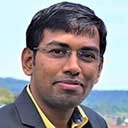 Arijit Roy is the Co-founder and Director of an IoT start-up,“SensorDrops Networks Pvt. Ltd.”. He did his PhD studies from the Indian Institute of Technology Kharagpur (IIT Kharagpur), India. Arijit was a Senior Research Fellow of the Council of Scientific & Industrial Research, Govt.of India. Prior to that Arijit completed an MS (by research) degree and B. Tech degree in Information Technology from the Indian Institute of Technology Kharagpur. and the West Bengal University of Technology, respectively. After completion of B.Tech, he worked as a Network Engineer in IntecInfonet Pvt. Ltd., India. He has 9 years of teaching experience at IIT Kharagpur. He has experiences of handling several government funded national and international research projects. His research works are published in different reputed SCI journals (including IEEE/ACM Transactions) and reputed conferences (IEEE WCNC, IEEE ICC, IEEE GLOBECOM, ACM ICDCN). He won the IEEE Systems Journal Best Paper Award 2020. Arijit delivered several talks in India and abroad. Additionally, he filed 6 Indian patents, which are along the same line of his research work. He received the Council of Scientific & Industrial Research Senior Research Fellowship (CSIR-SRF) in 2017. He has been recognized with several awards such as Samsung Innovation Award 2014 and IBM Day Award 2017. One of his research projects was selected (among the top 9 worldwide) in IEEE ComSoc Student competition in 2014. He received the prestigious Gandhian Young Technological Innovation (GYTI) Award-2018, for society relevant innovation (the award was received from honorable President of India). He was awarded with the prestigious India-France Raman-Charpak Fellowship-2018 (only 4 students were selected in Engineering Sciences from India), for visiting a French university and pursuing a short-term collaborative research. He received different travel grants from IIT Kharagpur and Microsoft Research (MSR) for attending international conferences and research events. He was selected as a young researcher to participate in the 6th Heidelberg Laureate Forum 2018, organized in Heidelberg, Germany, in which only the 200 most qualified Young Researchers (world-wide) are given the opportunity to enrich and share the unique atmosphere of the Heidelberg Laureate Forum. His research interests include Internet of Things (IoT), Sensor-cloud Architecture, Wireless Sensor Networks, Cloud Computing, and Wireless Body Area Networks. He, along with his team, developed different societal impactful products and prototypes in the domain of healthcare and agriculture.
Arijit Roy is the Co-founder and Director of an IoT start-up,“SensorDrops Networks Pvt. Ltd.”. He did his PhD studies from the Indian Institute of Technology Kharagpur (IIT Kharagpur), India. Arijit was a Senior Research Fellow of the Council of Scientific & Industrial Research, Govt.of India. Prior to that Arijit completed an MS (by research) degree and B. Tech degree in Information Technology from the Indian Institute of Technology Kharagpur. and the West Bengal University of Technology, respectively. After completion of B.Tech, he worked as a Network Engineer in IntecInfonet Pvt. Ltd., India. He has 9 years of teaching experience at IIT Kharagpur. He has experiences of handling several government funded national and international research projects. His research works are published in different reputed SCI journals (including IEEE/ACM Transactions) and reputed conferences (IEEE WCNC, IEEE ICC, IEEE GLOBECOM, ACM ICDCN). He won the IEEE Systems Journal Best Paper Award 2020. Arijit delivered several talks in India and abroad. Additionally, he filed 6 Indian patents, which are along the same line of his research work. He received the Council of Scientific & Industrial Research Senior Research Fellowship (CSIR-SRF) in 2017. He has been recognized with several awards such as Samsung Innovation Award 2014 and IBM Day Award 2017. One of his research projects was selected (among the top 9 worldwide) in IEEE ComSoc Student competition in 2014. He received the prestigious Gandhian Young Technological Innovation (GYTI) Award-2018, for society relevant innovation (the award was received from honorable President of India). He was awarded with the prestigious India-France Raman-Charpak Fellowship-2018 (only 4 students were selected in Engineering Sciences from India), for visiting a French university and pursuing a short-term collaborative research. He received different travel grants from IIT Kharagpur and Microsoft Research (MSR) for attending international conferences and research events. He was selected as a young researcher to participate in the 6th Heidelberg Laureate Forum 2018, organized in Heidelberg, Germany, in which only the 200 most qualified Young Researchers (world-wide) are given the opportunity to enrich and share the unique atmosphere of the Heidelberg Laureate Forum. His research interests include Internet of Things (IoT), Sensor-cloud Architecture, Wireless Sensor Networks, Cloud Computing, and Wireless Body Area Networks. He, along with his team, developed different societal impactful products and prototypes in the domain of healthcare and agriculture.
T06. Active Learning in Wireless Communication Systems: Agent Design and Methodology
- Haris Gacanin, Nokia Bell Labs, Germany
Abstract: This tutorial discusses technology and opportunities to embrace artificial intelligence (AI) in the design of autonomous wireless systems. We aim to provide readers with motivation and general AI methodology of autonomous agents in the context of self-organization in real time unifying sensing, perception, reasoning and learning. We discuss differences between training-based and training-free AI methodology for both matching and dynamic problems, respectively. Finally, we introduce the conceptual functions of autonomous agent with knowledge management. Finally, a practical case study is given to illustrate the application and potential gains.
Presenter:
 Haris Gačanin received his Dipl.-Ing. degree in Electrical engineering from the University of Sarajevo in 2000. In 2005 and 2008, respectively, he received MSc and Ph.D. from Tohoku University in Japan. He was with Tohoku University from 2008 until 2010 first as a Japan Society for the Promotion of Science (JSPS) postdoctoral fellow and later, as an Assistant Professor. He joined Alcatel-Lucent Bell (now Nokia Bell) in 2010 as a Physical-layer Expert and later as Department Head at Nokia Bell Labs. From 2020, he is a full professor at RWTH Aachen University where he is head of Chair for Distributed Signal Processing and a co-director of the Institute for Communication Technologies and Embedded Systems at RWTH Aachen University. His professional interests are related to broad areas of digital signal processing and artificial intelligence with applications in wireless communications. He has 200+ scientific publications (journals, conferences, and patent applications) and invited/tutorial talks. He is a Distinguished Lecturer of IEEE Vehicular Technology Society and an Associate Editor of IEEE Communications Magazine, while he served as the editor of IEICE Transactions on Communications and IET Communications. He is a Fellow of the Institute of Electrical and Electronics Engineers (IEEE) and acted as a general chair and technical program committee member of various IEEE conferences. He is a recipient of several Nokia innovation awards, IEICE Communication System Study Group Best Paper Award (joint 2014, 2015, 2017), The 2013 Alcatel-Lucent Award of Excellence, the 2012 KDDI Foundation Research Award, the 2009 KDDI Foundation Research Grant Award, the 2008 JSPS Postdoctoral Fellowships for Foreign Researchers, the 2005 Active Research Award in Radio Communications, 2005 Vehicular Technology Conference (VTC 2005-Fall) Student Paper Award from IEEE VTS Japan Chapter and the 2004 Institute of IEICE Society Young Researcher Award.
Haris Gačanin received his Dipl.-Ing. degree in Electrical engineering from the University of Sarajevo in 2000. In 2005 and 2008, respectively, he received MSc and Ph.D. from Tohoku University in Japan. He was with Tohoku University from 2008 until 2010 first as a Japan Society for the Promotion of Science (JSPS) postdoctoral fellow and later, as an Assistant Professor. He joined Alcatel-Lucent Bell (now Nokia Bell) in 2010 as a Physical-layer Expert and later as Department Head at Nokia Bell Labs. From 2020, he is a full professor at RWTH Aachen University where he is head of Chair for Distributed Signal Processing and a co-director of the Institute for Communication Technologies and Embedded Systems at RWTH Aachen University. His professional interests are related to broad areas of digital signal processing and artificial intelligence with applications in wireless communications. He has 200+ scientific publications (journals, conferences, and patent applications) and invited/tutorial talks. He is a Distinguished Lecturer of IEEE Vehicular Technology Society and an Associate Editor of IEEE Communications Magazine, while he served as the editor of IEICE Transactions on Communications and IET Communications. He is a Fellow of the Institute of Electrical and Electronics Engineers (IEEE) and acted as a general chair and technical program committee member of various IEEE conferences. He is a recipient of several Nokia innovation awards, IEICE Communication System Study Group Best Paper Award (joint 2014, 2015, 2017), The 2013 Alcatel-Lucent Award of Excellence, the 2012 KDDI Foundation Research Award, the 2009 KDDI Foundation Research Grant Award, the 2008 JSPS Postdoctoral Fellowships for Foreign Researchers, the 2005 Active Research Award in Radio Communications, 2005 Vehicular Technology Conference (VTC 2005-Fall) Student Paper Award from IEEE VTS Japan Chapter and the 2004 Institute of IEICE Society Young Researcher Award.
T07. Digital Twin for 6G (Cancelled)
- Yan Zhang, University of Oslo, Norway
- Yonghui Li, University of Sydney, Australia
Abstract: In this tutorial, we will present basic concepts related to digital twin for 6G and key enabling technologies with respect to communications, computation, machine learning, deep learning and cyber-physical optimization. We will first introduce the main concepts and challenges related to Digital Twin (DT) and we will provide a thorough perspective on why and how DT can be adapted for 6G. Then, we present a novel scenario DITEN (Digital Twin Edge Networks) and the research challenges related to offloading and edge association. In this scenario, we will focus on resource allocation, system models and optimization problems, and various offloading and edge association techniques. Next, we will present DT and machine learning to add intelligence and present our ideas on utilizing deep learning (deep reinforcement learning, federated learning) for low-latency, privacy-preservation, energy-efficiency and Quality-of-Service in 6G networks. We will further present DT in Air-Ground 6G networks which is essential for next-generation satellite-air-ground integrated networks. The approach and the solutions in this context will result in highly efficient interconnection and synergy among various types of components in 6G networks and its applications. Finally, we will point out several promising research directions related to Intelligent Reflecting Surface (IRS), blockchain intelligence, and deep learning.
Presenters:
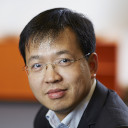 Yan Zhang (IEEE Fellow) is currently a Full Professor at the Department of Informatics, University of Oslo, Norway. He received a Ph.D. degree in School of Electrical & Electronics Engineering, Nanyang Technological University, Singapore. He received M.S. and B.S from Beihang University and Nanjing University of Post and Telecommunications, respectively. His current research interests include: 6G networks, Internet of Things (e.g., transport, smart grid). His works in these areas have received more than 19000+ citations and H-index 72. He received the prestigious award Clarivate Analytics (previously Thomson Reuters) "Highly Cited Researcher" since 2018. He is IEEE Fellow, IET Fellow, an elected member of Academia Europaea (MAE), and an elected member of Norwegian Academy of Technological Sciences (NTVA).
Yan Zhang (IEEE Fellow) is currently a Full Professor at the Department of Informatics, University of Oslo, Norway. He received a Ph.D. degree in School of Electrical & Electronics Engineering, Nanyang Technological University, Singapore. He received M.S. and B.S from Beihang University and Nanjing University of Post and Telecommunications, respectively. His current research interests include: 6G networks, Internet of Things (e.g., transport, smart grid). His works in these areas have received more than 19000+ citations and H-index 72. He received the prestigious award Clarivate Analytics (previously Thomson Reuters) "Highly Cited Researcher" since 2018. He is IEEE Fellow, IET Fellow, an elected member of Academia Europaea (MAE), and an elected member of Norwegian Academy of Technological Sciences (NTVA).
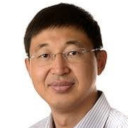 Yonghui Li (IEEE Fellow) is currently a Professor with the School of Electrical and Information Engineering, The University of Sydney. His current research interests are in the area of wireless communications, with particular focus on MIMO, millimeter-wave communications, ultra-reliable and low latency communications, machine-to-machine communications, coding techniques, wireless AI and industrial IoT. He received the prestigious Australia Research Council (ARC) Queen Elizabeth II Fellowship in 2008 and the ARC Future Fellowship in 2012. He is currently an Editor of the IEEE Transactions on Communications and the IEEE Transactions on Vehicular Technology. He has been on the organizing committees of several international conferences and a Guest Editor of several special issues of prestigious IEEE journals, such as IEEE JSAC, IEEE Communications Magazine, IEEE IoT Journals, and IEEE TII. He received Best Paper Awards from the 2014 IEEE ICC, 2017 IEEE PIMRC and 2014 IEEE Wireless Days Conferences. He is a Fellow of IEEE.
Yonghui Li (IEEE Fellow) is currently a Professor with the School of Electrical and Information Engineering, The University of Sydney. His current research interests are in the area of wireless communications, with particular focus on MIMO, millimeter-wave communications, ultra-reliable and low latency communications, machine-to-machine communications, coding techniques, wireless AI and industrial IoT. He received the prestigious Australia Research Council (ARC) Queen Elizabeth II Fellowship in 2008 and the ARC Future Fellowship in 2012. He is currently an Editor of the IEEE Transactions on Communications and the IEEE Transactions on Vehicular Technology. He has been on the organizing committees of several international conferences and a Guest Editor of several special issues of prestigious IEEE journals, such as IEEE JSAC, IEEE Communications Magazine, IEEE IoT Journals, and IEEE TII. He received Best Paper Awards from the 2014 IEEE ICC, 2017 IEEE PIMRC and 2014 IEEE Wireless Days Conferences. He is a Fellow of IEEE.
T08. Rate Splitting Multiple Access for Beyond 5G: Principles, Recent Advances, and Future Research Trends
- Bruno Clerckx, Professor, Imperial College London, London, UK
- Yijie (Lina) Mao, Imperial College London, London, UK
Abstract: Rate Splitting Multiple Access (RSMA) has emerged in the last few years as a powerful transmission strategy for robust interference management and a key enabler of novel multiple access, with applications in a wide range of scenarios (MU-MIMO, massive MIMO, multi-cell MIMO/CoMP, overloaded systems, NOMA, multigroup multicasting, mmwave communications, communications in the presence of RF impairments and superimposed unicast and multicast transmission, relay,…) and systems (terrestrial, cellular, satellite, …). The tutorial will demonstrate the benefits of RSMA in this wide range of scenarios and systems, and will present and elaborate on the signal processing and optimization techniques used to achieve the fundamentally promised gains. Open problems and challenges will also be discussed.
Presenters:
 Bruno Clerckx is a (Full) Professor, the Head of the Wireless Communications and Signal Processing Lab, and the Deputy Head of the Communications and Signal Processing Group, within the Electrical and Electronic Engineering Department, Imperial College London, London, U.K. He received the M.S. and Ph.D. degrees in applied science from the Université Catholique de Louvain, Louvain-la-Neuve, Belgium, in 2000 and 2005, respectively. From 2006 to 2011, he was with Samsung Electronics, Suwon, South Korea, where he actively contributed to 4G (3GPP LTE/LTEA and IEEE 802.16m) and acted as the Rapporteur for the 3GPP Coordinated Multi-Point (CoMP) Study Item. Since 2011, he has been with Imperial College London, first as a Lecturer from 2011 to 2015, Senior Lecturer from 2015 to 2017, Reader from 2017 to 2020, and now as a Full Professor. From 2014 to 2016, he also was an Associate Professor with Korea University, Seoul, South Korea. He also held various long or short-term visiting research appointments at Stanford University, EURECOM, National University of Singapore, The University of Hong Kong, Princeton University, The University of Edinburgh, The University of New South Wales, and Tsinghua University.
Bruno Clerckx is a (Full) Professor, the Head of the Wireless Communications and Signal Processing Lab, and the Deputy Head of the Communications and Signal Processing Group, within the Electrical and Electronic Engineering Department, Imperial College London, London, U.K. He received the M.S. and Ph.D. degrees in applied science from the Université Catholique de Louvain, Louvain-la-Neuve, Belgium, in 2000 and 2005, respectively. From 2006 to 2011, he was with Samsung Electronics, Suwon, South Korea, where he actively contributed to 4G (3GPP LTE/LTEA and IEEE 802.16m) and acted as the Rapporteur for the 3GPP Coordinated Multi-Point (CoMP) Study Item. Since 2011, he has been with Imperial College London, first as a Lecturer from 2011 to 2015, Senior Lecturer from 2015 to 2017, Reader from 2017 to 2020, and now as a Full Professor. From 2014 to 2016, he also was an Associate Professor with Korea University, Seoul, South Korea. He also held various long or short-term visiting research appointments at Stanford University, EURECOM, National University of Singapore, The University of Hong Kong, Princeton University, The University of Edinburgh, The University of New South Wales, and Tsinghua University.
 Yijie (Lina) Mao is a postdoctoral research associate with the Communications and Signal Processing Group (CSP), Department of the Electrical and Electronic Engineering at the Imperial College London (London, United Kingdom). She received the B.Eng. degree from the Beijing University of Posts and Telecommunications, and the B.Eng. (Hons.) degree from the Queen Mary University of London (London, United Kingdom) in 2014. She received the Ph.D. degree in the Electrical and Electronic Engineering Department from the University of Hong Kong (Hong Kong, China) in 2018. She was a Postdoctoral Research Fellow at the University of Hong Kong (Hong Kong, China) from Oct. 2018 to Jul. 2019. Her research interests include Multiple Input Multiple Output (MIMO) communication networks, rate-splitting and non-orthogonal multiple access. She served as the co-chair for 2020 IEEE International Conference on Communications (ICC) and 2020 IEEE International Symposium on Personal, Indoor and Mobile Radio Communications (PIMRC) on the workshops of Rate-Splitting and Robust Interference Management for Beyond 5G.
Yijie (Lina) Mao is a postdoctoral research associate with the Communications and Signal Processing Group (CSP), Department of the Electrical and Electronic Engineering at the Imperial College London (London, United Kingdom). She received the B.Eng. degree from the Beijing University of Posts and Telecommunications, and the B.Eng. (Hons.) degree from the Queen Mary University of London (London, United Kingdom) in 2014. She received the Ph.D. degree in the Electrical and Electronic Engineering Department from the University of Hong Kong (Hong Kong, China) in 2018. She was a Postdoctoral Research Fellow at the University of Hong Kong (Hong Kong, China) from Oct. 2018 to Jul. 2019. Her research interests include Multiple Input Multiple Output (MIMO) communication networks, rate-splitting and non-orthogonal multiple access. She served as the co-chair for 2020 IEEE International Conference on Communications (ICC) and 2020 IEEE International Symposium on Personal, Indoor and Mobile Radio Communications (PIMRC) on the workshops of Rate-Splitting and Robust Interference Management for Beyond 5G.
T09. Reconfigurable Intelligent Surfaces for Future Wireless Communications
- Alessio Zappone, University of Cassino and Southern Lazio Cassino, Italy
- Marco Di Renzo, CNRS, University Paris-Saclay Paris, France
- Shi Jin, Southeast University, Nanjing, China
- Merouane Debbah, Huawei France R&D, Paris, France
Abstract: As 5G networks take their final form, connectivity demands continue to increase exponentially, and new services pose more constraints on the performance that end-users expect. A recent technological breakthrough that holds the potential to meet these demands is that of reconfigurable intelligent surfaces. We believe that a tutorial on the principles and latest approaches of reconfigurable intelligent surfaces for future wireless communications will be of great value for both academics and industry practitioners.
Presenters:
 Dr. Alessio Zappone obtained his Ph.D. degree in electrical engineering in 2011 from the University of Cassino and Southern Lazio, Cassino, Italy. His Ph.D. studies were focused on distributed algorithms for energy-efficient resource allocation in wireless networks. After obtaining his Ph.D. Alessio has been with the Technische Universitat Dresden, Germany, managing the project CEMRIN on energy-efficient resource allocation in wireless networks, funded by the German Research Foundation. From 2017 to 2019 he has been the recipient of the H2020 Individual Marie Curie fellowship for experienced researchers BESMART, carried out in the LANEAS group of CentraleSupelec, Paris, France. He is now a tenured professor at the university of Cassino and Southern Lazio, Italy. He was appointed exemplary reviewer for the IEEE TRANSACTIONS ON COMMUNICATIONS and IEEE TRANSACTIONS ON WIRELESS COMMUNICATIONS in 2017. Alessio is an IEEE Senior Member, serves as senior area editor for the IEEE SIGNAL PROCESSING LETTERS and as guest editor for the IEEE JOURNAL ON SELECTED AREAS ON COMMUNICATIONS (Special Issues on Energy-Efficient Techniques for 5G Wireless Communication Systems and on Wireless Networks Empowered by RIS).
Dr. Alessio Zappone obtained his Ph.D. degree in electrical engineering in 2011 from the University of Cassino and Southern Lazio, Cassino, Italy. His Ph.D. studies were focused on distributed algorithms for energy-efficient resource allocation in wireless networks. After obtaining his Ph.D. Alessio has been with the Technische Universitat Dresden, Germany, managing the project CEMRIN on energy-efficient resource allocation in wireless networks, funded by the German Research Foundation. From 2017 to 2019 he has been the recipient of the H2020 Individual Marie Curie fellowship for experienced researchers BESMART, carried out in the LANEAS group of CentraleSupelec, Paris, France. He is now a tenured professor at the university of Cassino and Southern Lazio, Italy. He was appointed exemplary reviewer for the IEEE TRANSACTIONS ON COMMUNICATIONS and IEEE TRANSACTIONS ON WIRELESS COMMUNICATIONS in 2017. Alessio is an IEEE Senior Member, serves as senior area editor for the IEEE SIGNAL PROCESSING LETTERS and as guest editor for the IEEE JOURNAL ON SELECTED AREAS ON COMMUNICATIONS (Special Issues on Energy-Efficient Techniques for 5G Wireless Communication Systems and on Wireless Networks Empowered by RIS).
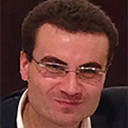 Dr. Marco Di Renzo received the Ph.D. degree in Electrical and Information Engineering from the University of L’Aquila, Italy, in 2007. Since 2010, he is Associate Professor with Paris-Saclay University - CNRS, CentraleSupelec, Univ. Paris Sud, France. He is a Distinguished Visiting Fellow of the Royal Academy of Engineering (UK), and co-founder of the university spin-off company WEST Aquila s.r.l., Italy. Dr. Di Renzo received the THALES Communications fellowship (2003-2006), University of L’Aquila, Italy; the Derogation pour l’Encadrement de These (2010), University of Paris-Sud, France; the 2012 IEEE CAMAD, 2014 IEEE CAMAD, 2014 IEEE ATC, 2015 IEEE ComManTel Best Paper Awards; the 2012 and 2014 IEEE WIRELESS COMMUNICATIONS LETTERS Exemplary Reviewer Certificate; the 2013 IEEECOMSOC Best Young Researcher Award for Europe, Middle East and Africa; the 2015-2018 CNRS Award for Excellence in Research and in Advising Doctoral Students; the 2017 IEEESEE Alain Glavieux Award. He serves as Editor in Chief of the IEEE COMMUNICATIONS LETTERS and Editor of the IEEE TRANSACTIONS ON COMMUNICATIONS. He is an IEEE Fellow and a Distinguished Lecturer of the IEEE Communications and IEEE Vehicular Technology Societies.
Dr. Marco Di Renzo received the Ph.D. degree in Electrical and Information Engineering from the University of L’Aquila, Italy, in 2007. Since 2010, he is Associate Professor with Paris-Saclay University - CNRS, CentraleSupelec, Univ. Paris Sud, France. He is a Distinguished Visiting Fellow of the Royal Academy of Engineering (UK), and co-founder of the university spin-off company WEST Aquila s.r.l., Italy. Dr. Di Renzo received the THALES Communications fellowship (2003-2006), University of L’Aquila, Italy; the Derogation pour l’Encadrement de These (2010), University of Paris-Sud, France; the 2012 IEEE CAMAD, 2014 IEEE CAMAD, 2014 IEEE ATC, 2015 IEEE ComManTel Best Paper Awards; the 2012 and 2014 IEEE WIRELESS COMMUNICATIONS LETTERS Exemplary Reviewer Certificate; the 2013 IEEECOMSOC Best Young Researcher Award for Europe, Middle East and Africa; the 2015-2018 CNRS Award for Excellence in Research and in Advising Doctoral Students; the 2017 IEEESEE Alain Glavieux Award. He serves as Editor in Chief of the IEEE COMMUNICATIONS LETTERS and Editor of the IEEE TRANSACTIONS ON COMMUNICATIONS. He is an IEEE Fellow and a Distinguished Lecturer of the IEEE Communications and IEEE Vehicular Technology Societies.
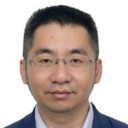 Dr. Shi Jin received the M.S. degree from Nanjing University of Posts and Telecommunications, Nanjing, China, in 2003, and the Ph.D. degree in information and communications engineering from the Southeast University, Nanjing, in 2007. From June 2007 to October 2009, he was a Research Fellow with the Adastral Park Research Campus, University College London, London, U.K. He is currently with the faculty of the National Mobile Communications Research Laboratory, Southeast University. His research interests include space time wireless communications, random matrix theory, information theory. He serves as an Associate Editor for the IEEE Transactions on Wireless Communications, IEEE Communications Letters, IET Communications. Dr. Jin and his coauthors have been awarded the 2011 IEEE Communications Society Stephen O. Rice Prize Paper Award in communication theory and a 2010 Young Author Best Paper Award by the IEEE Signal Processing Society.
Dr. Shi Jin received the M.S. degree from Nanjing University of Posts and Telecommunications, Nanjing, China, in 2003, and the Ph.D. degree in information and communications engineering from the Southeast University, Nanjing, in 2007. From June 2007 to October 2009, he was a Research Fellow with the Adastral Park Research Campus, University College London, London, U.K. He is currently with the faculty of the National Mobile Communications Research Laboratory, Southeast University. His research interests include space time wireless communications, random matrix theory, information theory. He serves as an Associate Editor for the IEEE Transactions on Wireless Communications, IEEE Communications Letters, IET Communications. Dr. Jin and his coauthors have been awarded the 2011 IEEE Communications Society Stephen O. Rice Prize Paper Award in communication theory and a 2010 Young Author Best Paper Award by the IEEE Signal Processing Society.
 Dr. Merouane Debbah obtained his Ph.D. from the Ecole Normale Suprieure Paris-Saclay (France). He worked for Motorola (France) from 1999-2002 and Vienna Research Center for Telecommunications (Austria) until 2003. From 2003 to 2007, he joined the Mobile Communications department of Eurecom (France). Since 2007, he is Full Professor at CentraleSupelec (France). Since 2014, he is Vice-President of the Huawei France R&D center and director of the Mathematical and Algorithmic Sciences Lab. He is Associate Editor in Chief of the journal Random Matrix: Theory and Applications and was associate and senior area editor for IEEE Transactions on Signal Processing. He obtained the ERC grant MORE and is IEEE Fellow. He received 19 best paper awards, among which the 2007 IEEE GLOBECOM best paper award, 2014 WCNC best paper award, 2015 ICC best paper award, 2015 IEEE Communications Society Leonard G. Abraham Prize, 2015 IEEE Communications Society Fred W. Ellersick Prize, 2016 IEEE Communications Society Best Tutorial paper award, 2018 IEEE Marconi Prize Paper Award. He received the Mario Boella award in 2005, the IEEE Glavieux Prize Award in 2011 and the Qualcomm Innovation Prize Award in 2012.
Dr. Merouane Debbah obtained his Ph.D. from the Ecole Normale Suprieure Paris-Saclay (France). He worked for Motorola (France) from 1999-2002 and Vienna Research Center for Telecommunications (Austria) until 2003. From 2003 to 2007, he joined the Mobile Communications department of Eurecom (France). Since 2007, he is Full Professor at CentraleSupelec (France). Since 2014, he is Vice-President of the Huawei France R&D center and director of the Mathematical and Algorithmic Sciences Lab. He is Associate Editor in Chief of the journal Random Matrix: Theory and Applications and was associate and senior area editor for IEEE Transactions on Signal Processing. He obtained the ERC grant MORE and is IEEE Fellow. He received 19 best paper awards, among which the 2007 IEEE GLOBECOM best paper award, 2014 WCNC best paper award, 2015 ICC best paper award, 2015 IEEE Communications Society Leonard G. Abraham Prize, 2015 IEEE Communications Society Fred W. Ellersick Prize, 2016 IEEE Communications Society Best Tutorial paper award, 2018 IEEE Marconi Prize Paper Award. He received the Mario Boella award in 2005, the IEEE Glavieux Prize Award in 2011 and the Qualcomm Innovation Prize Award in 2012.
T10. Wireless Communications for Federated Learning
- Kai-Kit Wong, University College London, U.K.
- Kaibin Huang, University of Hong Kong, China
- Mingzhe Chen, Princeton University, USA
- Zhaohui Yang, CTR, King’s College London, U.K
Abstract: Traditional machine learning is centralized in the cloud (data centers). Recently, the security concerns and the availability of abundant data and computation resources in wireless networks are pushing the deployment of learning algorithms towards the network edge. This has led to the emergence of a fast growing area, called edge learning, which integrates two originally decoupled areas: wireless communication and machine learning. It is widely expected that the advancements in edge learning would provide a platform for implementing edge artificial intelligence (AI) in 5G-and-Beyond systems and solving large-scale problems in our society ranging from autonomous driving to personalized healthcare. One of the most promising edge learning algorithms is the emerging federated learning framework, which features distributed learning over many wireless devices as coordinated by edge servers to cooperatively train a large-scale AI model using local data and CPUs/GPUs. The iterative learning process involves repeated downloading and uploading of high-dimensional (millions to billions) model parameters or their updates by tens to hundreds of devices. This will generate enormous data traffic, placing a heavy burden on the already congested radio access networks. The training problem cannot be efficiently solved using traditional wireless techniques targeting rate maximization and decoupled from learning. Achieving the goal of federated learning with high communication efficiencies calls for the designs of new wireless techniques based on a communication-and-learning integration approach. The observation of the recent surge in relevant research and the emergence of many exciting opportunities motivate us to propose the tutorial of “Wireless Communications for Federated Learning”. Thereby, this tutorial will seek to provide a comprehensive introduction to federated learning over wireless communications while delineating the potential opportunities, roadblocks, and challenges.
Presenters:
 Kai-Kit Wong (Fellow, IEEE) received the B.Eng., M.Phil., and Ph.D. degrees in electrical and electronic engineering, from The Hong Kong University of Science and Technology, Hong Kong, in 1996, 1998, and 2001, respectively. After graduation, he took up academic and research positions at The University of Hong Kong, Lucent Technologies, Bell-Labs, Holmdel, the Smart Antennas Research Group of Stanford University, and the University of Hull, U.K. He is currently the Chair of Wireless Communications at the Department of Electronic and Electrical Engineering, University College London, U.K. His current research centers around 5G and beyond mobile communications. He is Fellow of IEEE and IET, and is also on the editorial board of several international journals. He was a co-recipient of the 2013 IEEE Signal Processing Letters Best Paper Award, the 2000 IEEE VTS Japan Chapter Award at the IEEE Vehicular Technology Conference in Japan in 2000, and a few other international best paper awards. He has been the Editor-in-Chief of the IEEE Wireless Communications Letters, since 2020.
Kai-Kit Wong (Fellow, IEEE) received the B.Eng., M.Phil., and Ph.D. degrees in electrical and electronic engineering, from The Hong Kong University of Science and Technology, Hong Kong, in 1996, 1998, and 2001, respectively. After graduation, he took up academic and research positions at The University of Hong Kong, Lucent Technologies, Bell-Labs, Holmdel, the Smart Antennas Research Group of Stanford University, and the University of Hull, U.K. He is currently the Chair of Wireless Communications at the Department of Electronic and Electrical Engineering, University College London, U.K. His current research centers around 5G and beyond mobile communications. He is Fellow of IEEE and IET, and is also on the editorial board of several international journals. He was a co-recipient of the 2013 IEEE Signal Processing Letters Best Paper Award, the 2000 IEEE VTS Japan Chapter Award at the IEEE Vehicular Technology Conference in Japan in 2000, and a few other international best paper awards. He has been the Editor-in-Chief of the IEEE Wireless Communications Letters, since 2020.
 Kaibin Huang received the B.Eng. (first-class hons.) and the M.Eng. degrees from the National University of Singapore, and the Ph.D. degree from The University of Texas at Austin (UT Austin), all in electrical engineering. Presently, he is an associate professor in the Dept. of Electrical and Electronic Engineering (EEE) at The University of Hong Kong. His research interests include edge computing and learning and wireless communication techniques. Currently, he is an associate editor for IEEE Transactions on Wireless Communications and also for IEEE Transactions on Green Communications and Networking. He has also served on the editorial boards of IEEE Journal on Selected Areas in Communications (JSAC) series on Green Communications and Networking, and IEEE Wireless Communications Letters. He has guest edited a 2015 special issue of IEEE JSAC on energy harvesting communications and a 2021 issue of IEEE Journal of Selected Topics in Signal Processing on wirelessly powered communications. Dr. Huang received the IEEE Communication Society’s 2019 Best Tutorial Paper Award and two Asia Pacific Outstanding Paper Awards in 2015 and 2019, Outstanding Teaching Award from Yonsei, Motorola Partnerships in Research Grant, the University Continuing Fellowship from UT Austin, and Best Paper Awards from IEEE GLOBECOM 2006 and IEEE/CIC ICCC in 2018. He was named a Highly Cited Researcher by Clarivate Analytics in 2019.
Kaibin Huang received the B.Eng. (first-class hons.) and the M.Eng. degrees from the National University of Singapore, and the Ph.D. degree from The University of Texas at Austin (UT Austin), all in electrical engineering. Presently, he is an associate professor in the Dept. of Electrical and Electronic Engineering (EEE) at The University of Hong Kong. His research interests include edge computing and learning and wireless communication techniques. Currently, he is an associate editor for IEEE Transactions on Wireless Communications and also for IEEE Transactions on Green Communications and Networking. He has also served on the editorial boards of IEEE Journal on Selected Areas in Communications (JSAC) series on Green Communications and Networking, and IEEE Wireless Communications Letters. He has guest edited a 2015 special issue of IEEE JSAC on energy harvesting communications and a 2021 issue of IEEE Journal of Selected Topics in Signal Processing on wirelessly powered communications. Dr. Huang received the IEEE Communication Society’s 2019 Best Tutorial Paper Award and two Asia Pacific Outstanding Paper Awards in 2015 and 2019, Outstanding Teaching Award from Yonsei, Motorola Partnerships in Research Grant, the University Continuing Fellowship from UT Austin, and Best Paper Awards from IEEE GLOBECOM 2006 and IEEE/CIC ICCC in 2018. He was named a Highly Cited Researcher by Clarivate Analytics in 2019.
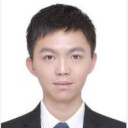 Mingzhe Chen is currently a Post-Doctoral Researcher at the Electrical Engineering Department, Princeton University and at the Chinese University of Hong Kong, Shenzhen, China. He received the Ph. D. degree from the Beijing University of Posts and Telecommunications, Beijing, China, in 2019. From 2016 to 2019, he was a visiting researcher at the Department of Electrical and Computer Engineering, Virginia Tech. His research interests include machine learning, virtual reality, unmanned aerial vehicles, game theory, wireless networks, and caching. He was an exemplary reviewer for IEEE Transactions on Wireless Communications and IEEE Transactions on Communications in 2018 and 2019. He served as a Co-Chair for 2020 ICC Workshop on Edge Machine Learning for 5G Mobile Networks and Beyond. He will serve as a Guest Editor for the IEEE Journal on Selected Areas in Communications (JSAC) Special Issue on Distributed Learning over Wireless Edge Networks.
Mingzhe Chen is currently a Post-Doctoral Researcher at the Electrical Engineering Department, Princeton University and at the Chinese University of Hong Kong, Shenzhen, China. He received the Ph. D. degree from the Beijing University of Posts and Telecommunications, Beijing, China, in 2019. From 2016 to 2019, he was a visiting researcher at the Department of Electrical and Computer Engineering, Virginia Tech. His research interests include machine learning, virtual reality, unmanned aerial vehicles, game theory, wireless networks, and caching. He was an exemplary reviewer for IEEE Transactions on Wireless Communications and IEEE Transactions on Communications in 2018 and 2019. He served as a Co-Chair for 2020 ICC Workshop on Edge Machine Learning for 5G Mobile Networks and Beyond. He will serve as a Guest Editor for the IEEE Journal on Selected Areas in Communications (JSAC) Special Issue on Distributed Learning over Wireless Edge Networks.
 Zhaohui Yang is currently a Postdoctoral Research Associate with the Center for Telecommunications Research, Department of Informatics, King's College London, U.K., where he has been involved in the EPSRC SENSE Project. He received the B.S. degree in information science and engineering from Chien-Shiung Wu Honors College, Southeast University, Nanjing, China, in June 2014, and the Ph.D. degree in communication and information system with the National Mobile Communications Research Laboratory, Southeast University, Nanjing, China, in May 2018. He served as the Co-Chair for IEEE International Conference on Communications (ICC), 1st Workshop on Edge Machine Learning for 5G Mobile Networks and Beyond, June 2020. He was an exemplary reviewer for IEEE Transactions on Communications in 2019. He served as a Guest Editor for the IEEE Communications Magazine Feature Topic on Communication Technologies for Efficient Edge Learning.
Zhaohui Yang is currently a Postdoctoral Research Associate with the Center for Telecommunications Research, Department of Informatics, King's College London, U.K., where he has been involved in the EPSRC SENSE Project. He received the B.S. degree in information science and engineering from Chien-Shiung Wu Honors College, Southeast University, Nanjing, China, in June 2014, and the Ph.D. degree in communication and information system with the National Mobile Communications Research Laboratory, Southeast University, Nanjing, China, in May 2018. He served as the Co-Chair for IEEE International Conference on Communications (ICC), 1st Workshop on Edge Machine Learning for 5G Mobile Networks and Beyond, June 2020. He was an exemplary reviewer for IEEE Transactions on Communications in 2019. He served as a Guest Editor for the IEEE Communications Magazine Feature Topic on Communication Technologies for Efficient Edge Learning.



